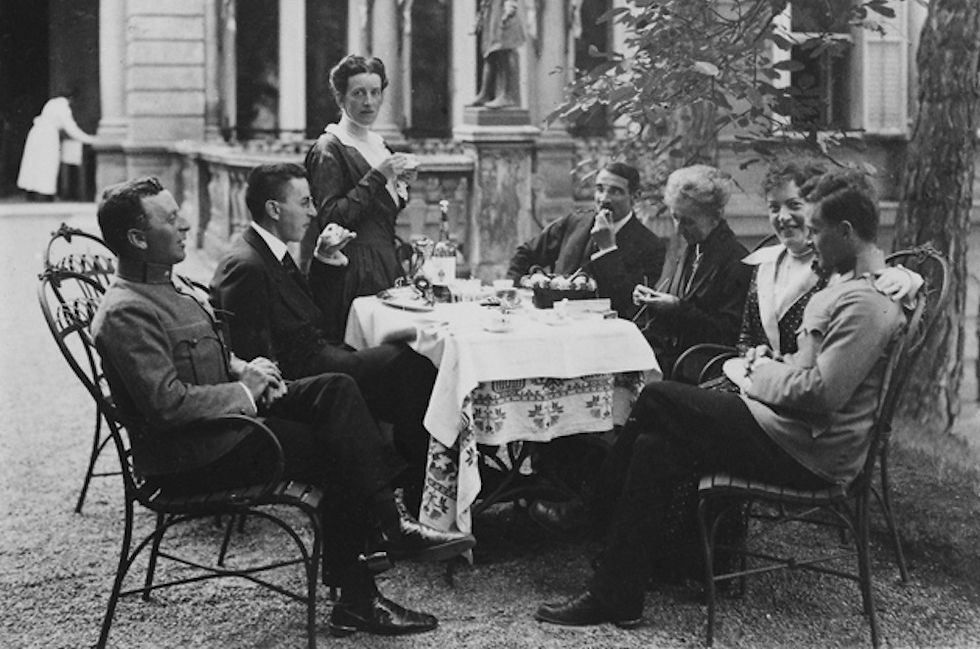Did Wittgenstein Solve Logic?
- Krishna Thiagarajan

- Feb 1, 2021
- 4 min read
In 1921, after publishing Tractatus Logico-Philosophicus, a thirty-two-year-old Ludwig Wittgenstein pompously declared that he had no less than solved philosophy and all of logic. This he based on the nature of the theory that he wrote the book to discuss – Picture Theory. Of course, its entirety cannot be done justice in a short article, however, I will address the parts critical to his assertion.
In essence, the claim that is made in Tractatus (as I understand it) is that language is delimited by what it is possible for the human mind to visualise. In his own words “We make to ourselves pictures of facts.” Facts to him, we will note, include objects. Consequently, we cannot communicate what we cannot visualise as it exists outside the boundaries of functional language, and therefore logic that tries to involve itself with the abstract – speaking of things like infinity, or “the universe” is purposeless and impossible to communicate. The conclusion that this brought Wittgenstein to was the major philosophical and logical problems of the time, like Set Theory (concerning Russell’s Paradox) and seemingly impossible conclusions being reached by making use of infinity in logic were not contradictions or issues at all as they fell outside the bounds of our own ability to communicate and thus rationalise. To him, they became semantic – it wasn’t that there was a contradiction or no solution, as it is perfectly clear the universe doesn’t contradict itself by virtue of its own existence. It was that we did not have the language to comprehend or discuss it as it fell outside said language’s limits.

So to Wittgenstein, we now had the ultimate work of philosophy: No more would ever be needed because Tractatus had solved it all. There was what could be known, and what fell outside of those bounds. All with an easy litmus test to gauge situations on the basis of. No further Philosophy would ever be needed, he proclaimed (and eventually later thought better of).
But his assertion runs into a substantial challenge: That what he did simply did not solve logic nor philosophy. Although in a purely technical sense he did, as he found an explanation to the contradictions that did away with them, he did not create a working framework through which to unify them to the body of logic that already existed, nor created an entirely new one that involved them in any meaningful way. Rather he chose to form a framework that simply designated them as off-limits.
To further this idea, it was clear he consequently viewed philosophy, and thus the content of his theory as stagnant fields and ideas respectively (as evidenced by his speedy consequent retirement at the ripe old age of thirty-two). In this, he failed to consider that the scope of human visualisation is itself possibly malleable. Throughout human history, we’ve consistently pushed the bounds of what it is possible to visualise – drawn on Plato’s realm of forms for inspiration, if you will, and pushed ourselves beyond the scope of what was previously capable of understanding and communicating. A terrific example is the adoption of agriculture in the development of humanity, wherein we made the leap from being able to only comprehend and view the world through the lens of searching for essentials in day to day life to using a much more complex and abstract lens that integrated larger social hierarchy, money, and power. The Ancient Egyptian discovery of a round earth joins in, for it was an instance wherein we used reason and mathematics to reach a conclusion that we were not previously capable of forming a picture of. Perhaps the most appropriate one, however, was Brahmagupta’s discovery of zero. Something that had not previously been within the scope of human visualisation was given a value and a term. Due to a need giving way to inspiration, someone was able to reach beyond what our ability to picture had until then provided for.

In Brahmagupta’s time, there undoubtedly were contradictions and confusion that surrounded the lack of numerical value that he needed to bring zero into existence to solve. But Picture Theory would have put to solve those problems beyond the scope of human understanding due to us not yet having been able to visualise the component parts of the solutions. Perhaps the exact same was occurring with Set Theory, or the Theory of Types then, and we just await the creative who can visualise what exists outside of the bounds of our understanding today, and invent for us the zero needed to solve these problems in logic.
Wittgenstein may have determined what he viewed as the bounds of human philosophical thought, however, his solution only serves to accept defeat rather than embrace the struggle of knowledge. In one sense, Wittgenstein did not solve philosophy – he declared it dead. But Philosophy cannot be dead as long as the ingenuity of man lives. And the ingenuity of man will live unto eternity.







Comments